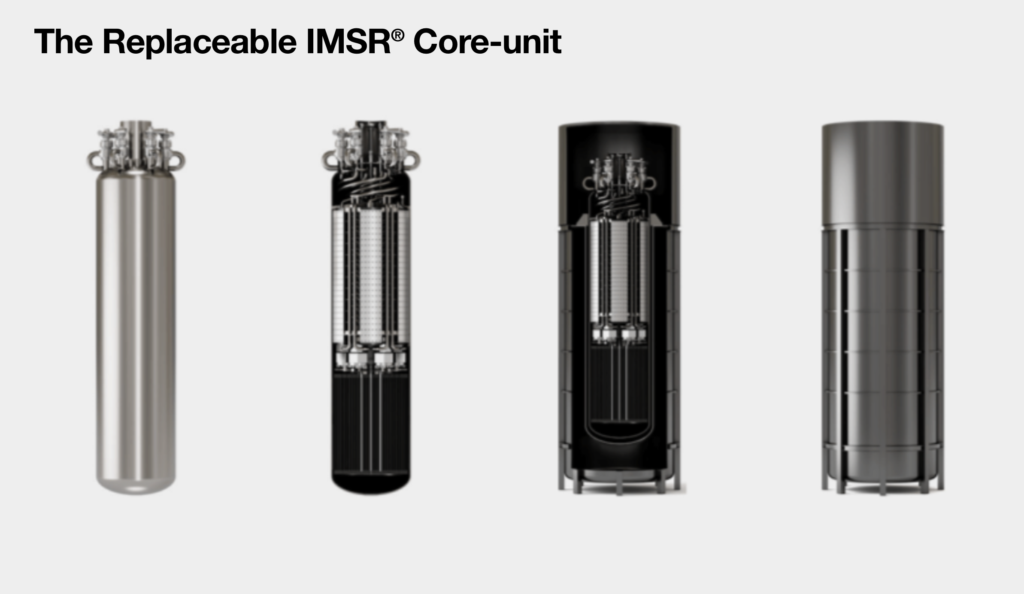
by James C. Sherlock
We write here often about electric power in Virginia, but usually related to public utilities. We focus on Dominion and Appalachian Power.
There is another big market: industrial power plants independent of utilities and the grid (and thus not requiring State Corporation Commission approval).
Those are not reflected in the plans of the utilities except inasmuch as they lower demand.
Users include the steel and cement industries, oil and gas, pulp and paper, mining, and chemical industries. And military bases.
The United States Navy is the world’s most advanced operational user of nuclear power and thus has both a culture and a corporate structure to support nuclear energy.
Each of the military services needs to maintain the independence of its major bases from utilities to control costs, to ensure reliability by independence from the grid and thus to support uninterrupted operations.
But even the Navy does not currently use nuclear power to provide co-generation of the steam and electricity needs of its shore infrastructure.
Among the technical reasons industrial power plants are conventionally powered:
- low-heat commercial nuclear reactors are not capable of efficient co-generation; and
- high-heat newer technology reactors shorten the life span of the graphite in the cores.
a Generation IV nuclear technology system, were pioneered at Oak Ridge National Laboratory starting in 1968.
An advanced co-generation MSR targeted for commercial deployment in 2030 just achieved a major milestone in Canada.
It offers clean co-generation.
Dow Chemical has a contract with another industrial nuclear reactor supplier using very different Gen IV technology. With Dow X-Energy will jointly develop and build a 4-reactor demonstration plant at one of Dow’s Gulf Coast plants. To give an idea of the practicality of these solutions, X-Energy’s plant components are truck-transportable.
The U.S. Department of Energy’s (DOE) Advanced Reactor Demonstration Program (ARDP) will fund X-Energy’s costs.
Nuclear-powered co-generation uses thus will extend beyond military infrastructure to large consumers across the industrial base.
In both conventional and nuclear power plants, thermal energy is converted to mechanical energy to do the work of turning turbines to create electricity.
Power plants are heat engines. As a general rule, the higher the source temperature from a heat engine, the more mechanical work is available — the higher its thermal efficiency.
The industrial facilities with which I am most familiar, naval bases, depend upon co-generation of heat (steam) at high temperature (585 deg.) and electrical power by onsite plants.
Siemens Energy, a major supplier of industrial power plant turbines, shows its lineup here.
U.S. naval bases currently use or are converting to natural-gas-fired plants to accomplish co-generation. Those plants have relatively high thermal efficiency in the 45% range.
For a look at the scale of the requirements at Norfolk Naval Base see here.
But the Navy, and I am sure the other services, has run into environmental and environmental justice opposition even for newer conventional power plants that are more efficient and less polluting than the ones they replace.
It will be interesting to see the reaction of those same communities as the Navy and the other services plan to eliminate with nuclear plants the pollution to which they currently object.
While currently operational nuclear plants produce clean electricity, they are water-cooled for the safety of their operation. They create heat at low temperature (290 deg.) and their thermal efficiency is in the 30% – 33% range.
Terrestrial Energy Incorporated (TEI) in April achieved a milestone with the Canadian Nuclear Safety Commission (CNSC) that is very important, exciting even.
It successfully completed a Phase 2 pre-licensing vendor design review with its
Integral Molten Salt Reactor (IMSR), a Gen IV technology nuclear power generator that also provides high temperature steam at thermal efficiency that matches that of gas-fired plants.
The executive summary of that CNSC review most importantly states, that while there is more work to do,
No fundamental barriers to licensing were identified.
IMSR technology description from TEI:
The IMSR® Plant uses molten salt fission technology. This is high-temperature fission technology, classified as Generation IV fission technology class under international treaty.
Molten salt fission technology uses a molten salt as coolant and fuel. Conventional fission technology uses a water coolant circulating through a highly pressurized system to cool solid fuel elements, which are the signature technology features of current nuclear power plants.
A nuclear reactor requires a high-performance coolant for safe and efficient commercial operation. Molten salts are such coolants. They have exceptional thermal stability, making them superior reactor coolants compared to water.
This permits safe high-temperature and low-pressure reactor operation, which is crucial for heat supply to the industry, to reduce the cost of nuclear energy, and transform the efficiency of nuclear electric power generation.
A similar application review is underway at the U.S. Nuclear Regulatory Commission with support from the U.S. Department of Energy.
The primary limiting factor of MSRs in commercial applications has been the lifespan of the graphite in a high-temperature reactor core. TEI says that it has solved that problem with replaceable reactor cores that it claims are are “simple and safe (and cost effective) to replace” at seven-year intervals. (See image at opening.)
We’ll see.
But the milestone in Canada is a major achievement.
The U.S. Navy seems perfectly positioned by experience and culture to be an early adopter of commercialized molten salt reactors that meet the needs of its facilities.
Norfolk Naval Station, Oceana Naval Air Station, Joint Base Little Creek and the shipyards in Hampton Roads come instantly to mind.
The market beyond the military bases and shipyards just here in Hampton Roads can include the Port of Virginia.
Even bigger breakthroughs in design show promise for the future. See Transmutex as an example of Gen V.
The current residual opposition to nuclear power based on prior experience with early generation light water reactors will soon, with the operationalization of Gen 4, seem quaint.

Leave a Reply
You must be logged in to post a comment.